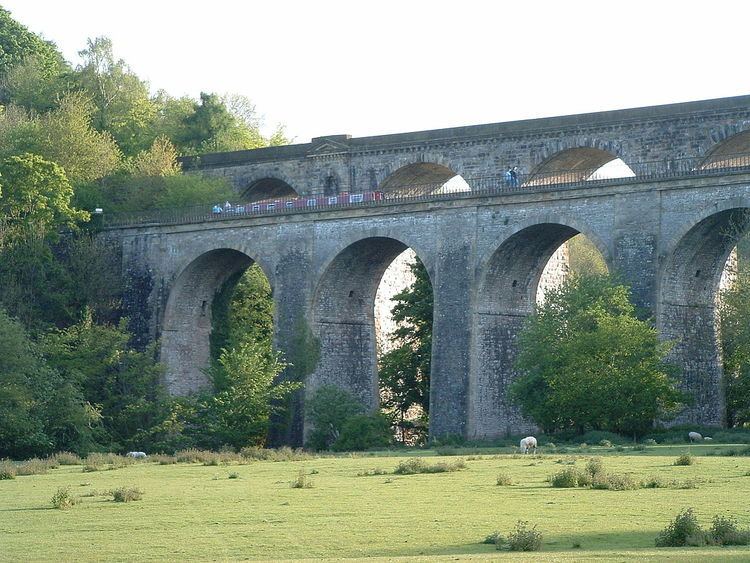OS grid reference SJ287373 Maintained by British Waterways Clearance below 21 m Opened 1801 Total length 220 m | Construction started 17 June 1796 Height 21 m | |
 | ||
Similar | ||
Chirk aqueduct and tunnel as seen from a narrowboat
Chirk Aqueduct is a 70-foot (21 m) high and 710-foot (220 m) long navigable aqueduct that carries what is now the Llangollen Canal across the Ceiriog Valley near Chirk, on the England-Wales border, spanning the two countries.
Contents
Chirk aqueduct
History
The aqueduct was designed by Thomas Telford for the Ellesmere Canal. The foundation stone was laid on 17 June 1796 and it was completed in 1801. It has a cast iron trough within which the water is contained. The masonry walls hide the cast iron interior. The aqueduct followed Telford's innovative Longdon-on-Tern Aqueduct on the Shrewsbury Canal, and was a forerunner of the Pontcysyllte Aqueduct, also on the Llangollen Canal. The aqueduct was briefly the tallest navigable one ever built, and it now is Grade II* listed in both England and Wales. It forms part of the Pontcysyllte Aqueduct World Heritage Site.
Description
The aqueduct consists of ten arches, each with a span of 40 feet (12 m). The water level is 65 feet (20 m) above the ground and 70 feet (21 m) above the River Ceiriog. The stone work is yellow sandstone. William Hazledine provided the ironwork for the aqueduct. Originally built with iron plates only at the base of the trough, iron side plates were added to the aqueduct in 1870 to alleviate leakage.
The Chirk Tunnel starts at the north end of the Chirk Aqueduct, allowing the canal to continue on towards Llangollen. A railway viaduct was built later alongside the aqueduct. It is higher than the aqueduct, which was specifically included in the design in order to emphasise the superiority of rail transportation over water modes.
